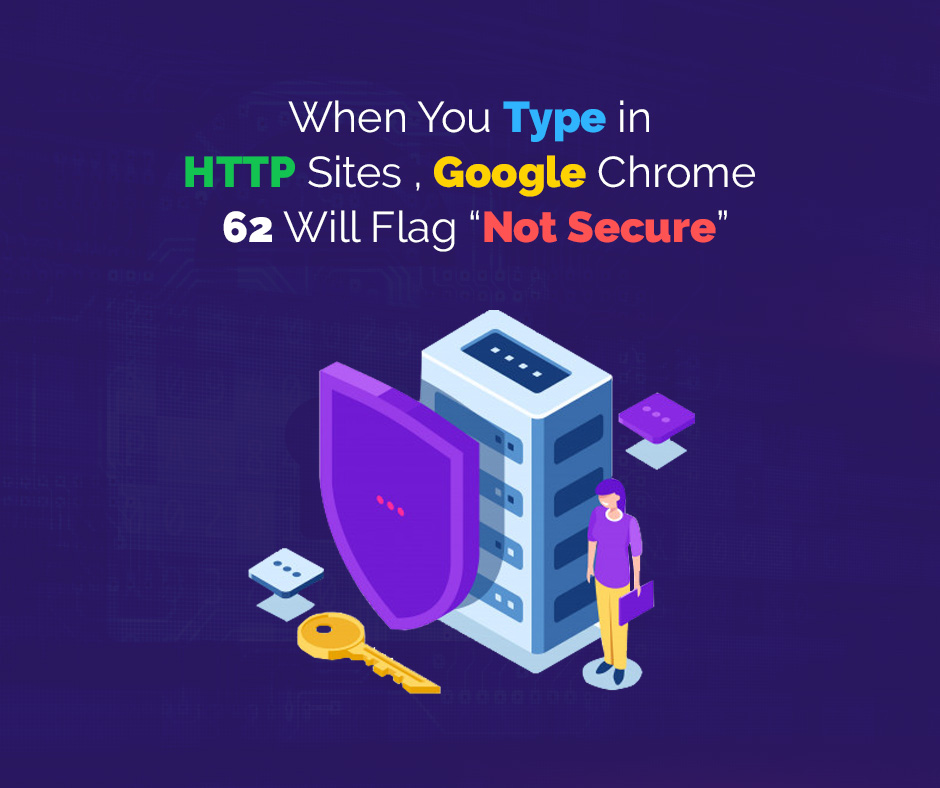You must Pay attention as you are going to be in serious trouble if still there is no SSL certificate on your websites. Google really wants you to get secure and DV SSL Certificates within six months, otherwise there will be immense traffic loss in October.
With every passing day, Google is increasing its efforts to push notifications in the search console (formerly webmasters) for enabling encryption on their websites. To achieve this goal, a number of steps are being designed. With the popularity of its Chrome browser Google is going to give serious warning to all those webmasters who don’t secure the connections to their website with SSL certificates by October.
Google’s Plan to Expand SSL Installation Base
Google has carved out a multi-step plan to increase the installation base of SSL certificates among websites. First step has been taken in this direction, and now it’s going to take the second one in October. The steps are:
- The first step was to start using the ‘Not Secure’ address bar label on all those sites that collect passwords or credit card data. This step has taken place in January with the rollout of Chrome 56. For others, as of today there is an exclamation mark inside a circle, which upon clicking tells the user that their connection with the site is unsecured and information they submit to the site can be interrupted by unknown parties. In Chrome 62, the ‘not secure’ label will show up consistently even if the user is browsing through an incognito window.
- The next step in line is to start showing that prominent ‘not secure’ label on all websites that are running without SSL certificates – not just those that collect passwords or credit card data. This will happen in October with the rollout of Chrome 62, Chrome users will type anything (not just a password or payment information) in any form field or search box on an HTTP site they’ll see the warning label.
This second step is much more noteworthy because most web sites include at least a search bar that their visitors use to find things.A 23% decline in traffic of unsecured web pages has been noted due to Google’s first step alone-taken in January. Now you can get an idea of what can be the effect of this step!
Google will take an even stricter step – in its official blog post announcing the next move, it has said that it will start showing the label constantly for all HTTP websites even outside of incognito mode. Eventually what will happen, the reports suggest that it may replace the symbol of that warning label with an exclamation mark inside the circle to an exclamation mark inside a red triangle. This will certainly look more horrible to users and thus draw their attention more quickly than the current symbol.
Firefox Also on the Same Track
It is not just Google, In January Mozilla Firefox also started showing in-context warnings for unsecured payment and login pages.
The warnings are displayed by small pop-ups below the password/payment information form fields. While it is not critical as flagging the whole site as not secure, there’s no assurance that Firefox will not follow the steps of Google. If this occurs, unsecured websites can lose a major chunk of their traffic. 53% and 6% are Chrome and Firefox market share, respectively. If you look closely at these figures then it should not be difficult to get that Chrome alone implementing its warnings can wipe out a massive block of traffic from unsecured websites.
The Professional Approach to Security
Comprehensively, if you’re not on HTTPS, things are not going to be easy for you now. You have a time period of six months for you to install an SSL certificate on your web server. In this way, you will be able to escape the disaster that next Huge Chrome update may bring. Not for the sake of Google but for the sake of users, you have to take a step today. The users are sharing their information with you, so it’s your responsibility to ensure the security of that information.You can use Google set-up guide that describes all the steps involved in GeoTrust SSL Certificate installation. In addition, it’s also much stress-free and more inexpensive to set up SSL certificates nowadays than it was a couple of years ago. Various types of certificates available from many different companies so you can flexibly choose the one according to your needs. All big websites have already reached the standard. Keeping all this in mind, you really don’t have a reason to avoid or delay the installation of an SSL certificate. Hence, you ought to acquire a digital certificate for your online applications.

